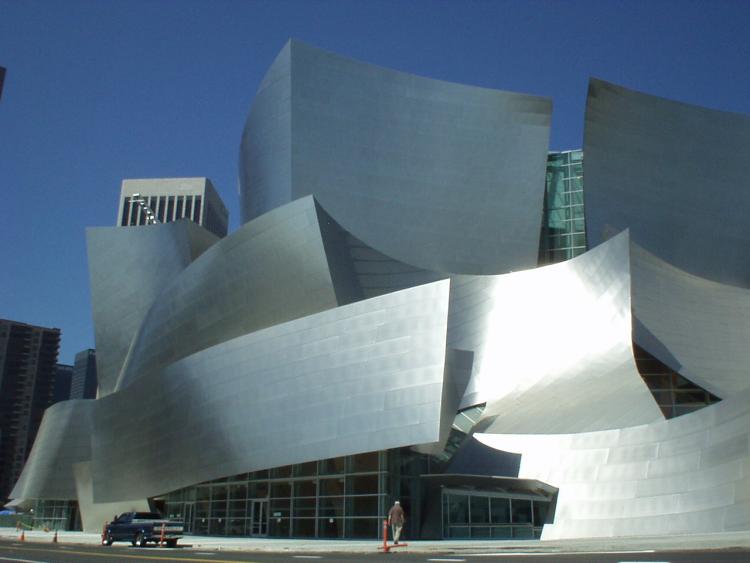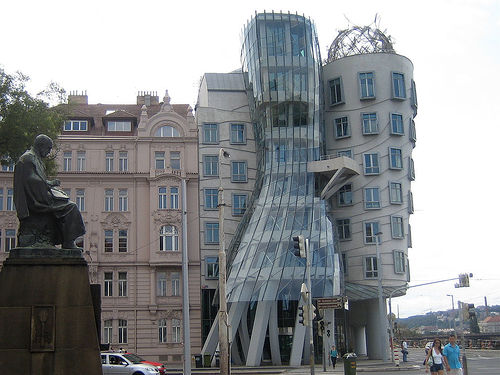
Daniel Pflumm

Thomas Lélu & Jean-Max Colard, Roue de vélo, After Marcel Duchamp, 2006

Michael Gumhold, Movement #1913–2007, 2007

Ji Lee, Duchamp Reloaded, 2009

Sherrie Levine, Fountian (After Marcel Duchamp), 1991

Shepard Fairey's Obama Hope poster
5 Questions/Comments:
1. Discuss the term "intellectual property" used by music industry lobbyist Rick Cairns. He says, "...the unique expression of love is (his) property. (He) wishes to own the rights to that property." Does he realize what he is saying? Does he want to profit from love, or control the expression when expressed by people? Both? What a horrible would that would be. We would all be emotionless, fearing being sited and charged for emoting.
2. Ideas are more valuable than gold."Wealth is in the products of the mind."...quote from RIP. The only place we cannot plug into at any given moment is the mind. What we think is contained in our heads, and nobody can see in. Although, now we have brain scans and technology that can see in...but not our thoughts. We have lie detectors, but they are not 100% fool proof. So, now, the idea that leads to a money making product, tangible or abstract, is what is valuable. Once it leaves the brain, there is fear it will be stolen be another.
3. On page 23 of Postproduction, there is a Marx reference: "man produces his own body, e.g., through feeding one form of consumption....a dress becomes really a dress only by being worn, a house which is uninhabited is indeed not really a house."
So, if it has not functioned for its intended use, it is not valid, or it is not worthy of the object title? If nobody is around to hear the tree fall in the forest, did it really make a sound? Back to consumption, can a person consume a person? Can an emotion be consumed?
4."...the moment of presentation is made sacred...we only look at what is well-presented; we only desire what is desired by others" from page 27 of Postproduction. This quote makes me think of the question above, #3. The art object is not yet art until it is viewed, but it also has to be well-presented, but it also has to be wanted by many people for it to be valid. Or valued.
5. The Cannibal Manifesto was published in 1928 by Brazilian poet and polemicist Oswald de Andrade. Its argument is that Brazil's history of "cannibalizing" other cultures is its greatest strength, while playing on the modernists' primitivist interest in cannibalism as an alleged tribal rite. Cannibalism becomes a way for Brazil to assert itself against European post-colonial cultural domination. (wikipidia)
The Cannibal Manifesto:
Only Cannibalism unites us. Socially. Economically. Philosophically.
The unique law of the world. The disguised expression of all individualisms, all collectivisms. Of all religions. Of all peace treaties.
Tupi or not tupi that is the question.
Against all catechisms. And against the mother of the Gracos.
I am only interested in what’s not mine. The law of men. The law of the cannibal.
We are tired of all those suspicious Catholic husbands in plays. Freud finished off the enigma of woman and the other recent psychological seers.
What dominated over truth was clothing, an impermeable layer between the interior world and the exterior world. Reaction against people in clothes. The American cinema will tell us about this.
Sons of the sun, mother of living creatures. Fiercely met and loved, with all the hypocrisy of longing: importation, exchange, and tourists. In the country of the big snake.
It’s because we never had grammatical structures or collections of old vegetables. And we never knew urban from suburban, frontier country from continental. Lazy on the world map of Brazil.
One participating consciousness, one religious rhythm.
Against all the importers of canned conscience. For the palpable existence of life. And let Levy-Bruhl go study prelogical mentality.
We want the Cariba Revolution. Bigger than the French Revolution. For the unification of all the efficient revolutions for the sake of human beings. Without us, Europe would not even have had its paltry declaration of the rights of men.
The golden age proclaimed by America. The golden age. And all the girls.
Filiation. The contact with the Brazilian Cariba Indians. Ou Villegaignon print terre. Montaigne. Natural man. Rousseau. From the French Revolution to Romanticism, to the Bolshevik Revolution, to the Surrealist Revolution and the technological barbarity of Keyserling. We’re moving right along.
We were never baptized. We live with the right to be asleep. We had Christ born in Bahia. Or in Belem do Pata.
But for ourselves, we never admitted the birth of logic.
Against Father Vieira, the Priest. Who made our first loan, to get a commission. The illiterate king told him: put this on paper but without too much talk. So the loan was made. Brazilian sugar was accounted for. Father Vieira left the money in Portugal and just brought us the talk.
The spirit refuses to conceive spirit without body. Anthropomorphism. Necessity of cannibalistic vaccine. For proper balance against the religions of the meridian. And exterior inquisitions.
We can only be present to the hearing world.
We had the right codification of vengeance. The codified science of Magic. Cannibalism. For the permanent transformation of taboo into totem.
Against the reversible world and objectified ideas. Made into cadavers. The halt of dynamic thinking. The individual a victim of the system. Source of classic injustices. Of romantic injustices. And the forgetfulness of interior conquests.
Screenplays. Screenplays. Screenplays. Screenplays. Screenplays. Screenplays. Screenplays.
Cariba instinct.
Death and life of hypotheses. From the equation I coming from the Cosmos to the axiom Cosmos coming from the I. Subsistence. Knowledge. Cannibalism.
Against the vegetable elites. In communication with solitude.
We were never baptized. We had the Carnival. The Indian dressed as a Senator of the Empire. Acting the part of Pitt. Or playing in the operas of Alencar with many good Portuguese feelings.
We already had communism. We already had a surrealist language. The golden age.
Catiti Catiti
Imara Notia
Notia Imara
Ipeju*
Magic and life. We had relations and distribution of fiscal property, moral property, and honorific property. And we knew how to transport mystery and death with the help of a few grammatical forms.
I asked a man what was Right. He answered me that it was the assurance of the full exercise of possibilities. That man was called Galli Mathias. I ate him.
The only place there is no determinism is where there is mystery. But what has that to do with us?
Against the stories of men that begin in Cape Finisterre. The world without dates. Without rubrics. Without Napoleon. Without Caesar.
The fixation of progress by means of catalogues and television sets. Only with machinery. And blood transfusions.
Against antagonistic sublimations brought over in sailing ships.
Against the truth of the poor missionaries, defined through the wisdom of a cannibal, the Viscount of Cairo – It is a lie repeated many times.
But no crusaders came to us. They were fugitives from a civilization that we are eating up, because we are strong and as vindictive as the land turtles.
Only God is the conscience of the Uncreated Universe, Guaraci is the mother of all living creatures. Jaci is the mother of vegetables.
We never had any speculation. But we believed in divination. We had Politics, that is, the science of distribution. And a socio-planetary system.
Migrations. The flight from tedious states. Against urban scleroses. Against Conservatives and speculative boredom.
From William James and Voronoff. Transfiguration of taboo into totem. Cannibalism.
The pater familias is the creation of the stork fable: a real ignorance of things, a tale of imagination and a feeling of authority in front of curious crowds.
We have to start from a profound atheism in order to reach the idea of God. But the Cariba did not have to make anything precise. Because they had Guaraci.
The created object reacts like the Fallen Angel. Ever since, Moses has been wandering about. What is that to us?
Before two Portuguese discovered Brazil, Brazil discovered happiness.
Against the Indian de tocheiro. The Indian son of Mary, the godson of Catherine of Médicis and the son-in-law of Don Antonio de Mariz.
Happiness is the real proof.
No Pindorama matriarchy.
Against Memory the source of habit. Renewed for personal experience.
We are concrete. We take account of ideas, we react, we burn people in the public squares. We suppress ideas and other kinds of paralysis. Through screenplays. To believe in our signs, to believe in our instruments and our stars.
Against Goethe, against the mother of the Gracos, and the Court of Don Juan VI.
Happiness is the real proof.
The struggle between what we might call the Uncreated and the Created – illustrated by the permanent contradiction of man and his taboo. Daily love and the capitalist modus vivendi. Cannibalism. Absorption of the sacred enemy. To transform him into a totem. The human adventure. Earthly finality. However, only the pure elite manage to realize carnal cannibalism within, some sense of life, avoiding all the evils Freud identified, those religious evils. What yields nothing is a sublimation of the sexual instinct. It is a thermometric scale of cannibalist instinct. Once carnal, it turns elective and creates friendship. Affectivity, or love. Speculative, science. It deviates and transfers. We arrive at utter vilification. In base cannibalism, our baptized sins agglomerate – envy, usury, calumny, or murder. A plague from the so-called cultured and Christianized, it’s what we are acting against. Cannibals.
Against Anchieta singing the eleven thousand virgins in the land of Iracema – the patriarch Joa Ramalho the founder of Sao Paulo.
Our independence was never proclaimed. A typical phrase of Don Juan VI – My son, put this crown on your head, before some adventurer does it! We expel the dynasty. We have to get rid of the Braganza spirit, the ordinations and snuff of Maria da Fonte.
Against social reality, dressed and oppressive, defined by Freud – in reality we are complex, we are crazy, we are prostitutes and without prisons of the Pindorama matriarchy.
Note: *"The New Moon, or the Lua Nova, blows in Everyman remembrances of me" from The Savages, by Couto Magalhaes.
Cannibal Manifesto (also known as the Brazilwood Manifesto) was written in 1928 by Oswald de Andrade, a member of the Brazilian art movement known as Modernist, which began in 1923.


































